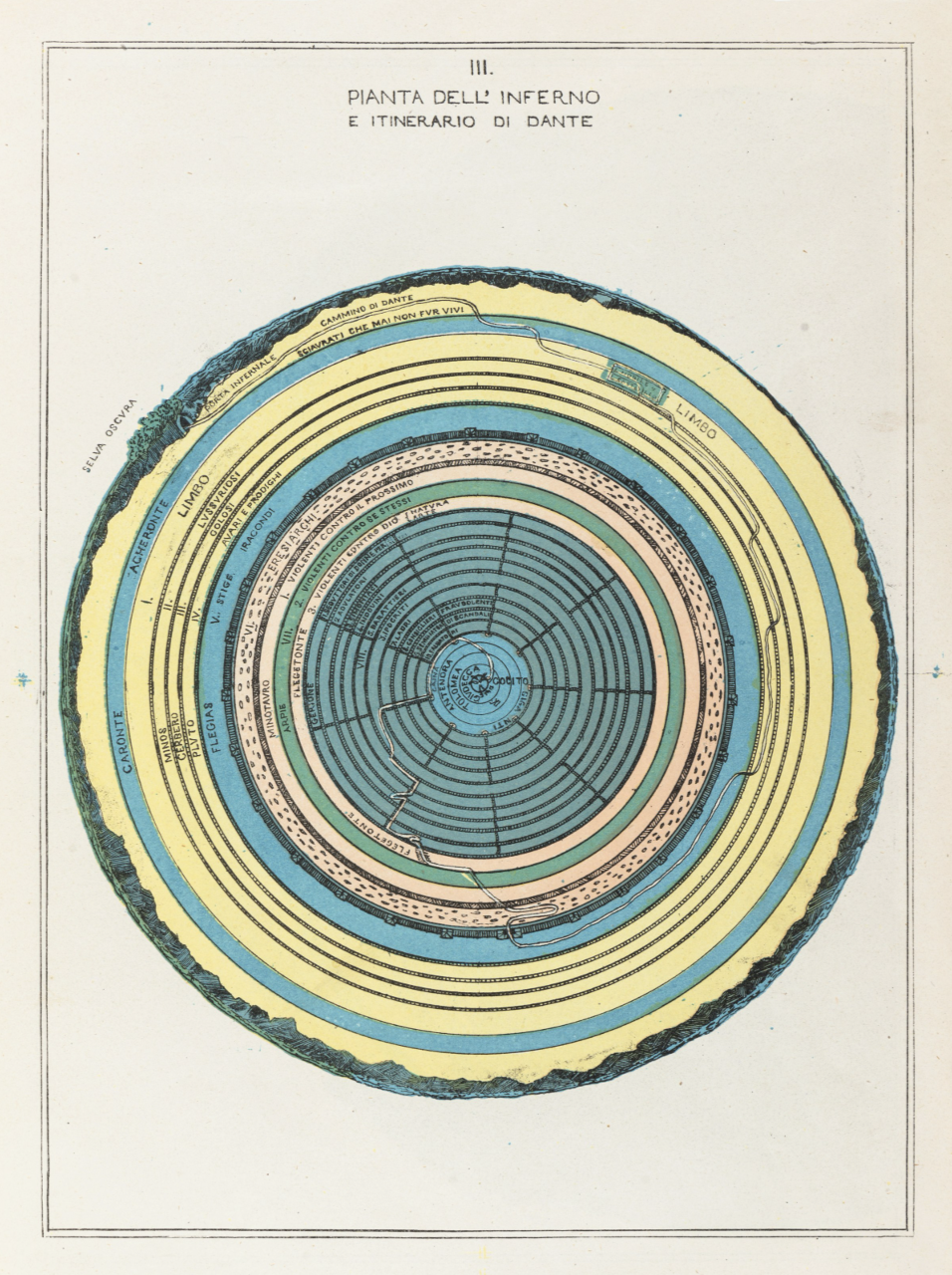Beautiful 19th Century Maps of Dante’s Divine Comedy: Inferno, Purgatory, Paradise & More



Even the least religious among us speak, at least on occasion, of the circles of hell. When we do so, we may or may not be thinking of where the concept originated: Dante’s Divina Commedia, or Divine Comedy. We each imagine the circles in our own way — usually filling them with sinners and punishments inspired by our own distastes — but some of Dante’s earlier readers did so with a seriousness and precision that may now seem extreme. “The first cosmographer of Dante’s universe was the Florentine polymath Antonio Manetti,” writes the Public Domain Review’s Hunter Dukes, who “concluded that hell was 3246 miles wide and 408 miles deep.” A young Galileo suggested that “the Inferno’s vaulted ceiling was supported by the same physical principles as Brunelleschi’s dome.”


In 1855, the aristocrat sculptor-politician-Dante scholar Michelangelo Caetani published his own precise artistic renderings of not just the Inferno, but also the Purgatorio and Paradiso, in La materia della Divina commedia di Dante Alighieri dichiarata in VI tavole, or The Divine Comedy of Dante Alighieri Described in Six Plates.
“The first plate offers an overview of Dante’s cosmography, leading from the lowest circle of the Inferno up through the nine heavenly spheres to Empyrean, the highest level of Paradise and the dwelling place of God,” writes Dukes. “The Inferno is visualized with a cutaway style,” its circles “like geological layers”; terraced like a wedding cake, “Purgatory is rendered at eye level, from the perspective of some lucky soul sailing by this island-mountain.”


In Paradise, “the Inferno and Purgatory are now small blips on the page, worlds left behind, encircled by Mercury, Venus, Saturn, and the other heavenly spheres.” At the very top is “the candida rosa, an amphitheater structure reserved for the souls of heaven” where “Dante leaves behind Beatrice, his true love and guide, to come face-to-face with God and the Trinity.” You can examine these and other illustrations at the Public Domain Review or Cornell University Library’s digital collections, which adds that they come from “a second version of this work produced by Caetani using the then-novel technology of chromolithography” in 1872, “produced in a somewhat smaller format by the monks at Monte Cassino” — a crew who could surely be trusted to believe in the job.


Related content:
A Digital Archive of the Earliest Illustrated Editions of Dante’s Divine Comedy (1487–1568)
Dante’s Divine Comedy: A Free Course from Columbia University
Based in Seoul, Colin Marshall writes and broadcasts on cities, language, and culture. His projects include the Substack newsletter Books on Cities and the book The Stateless City: a Walk through 21st-Century Los Angeles. Follow him on the social network formerly known as Twitter at @colinmarshall.




